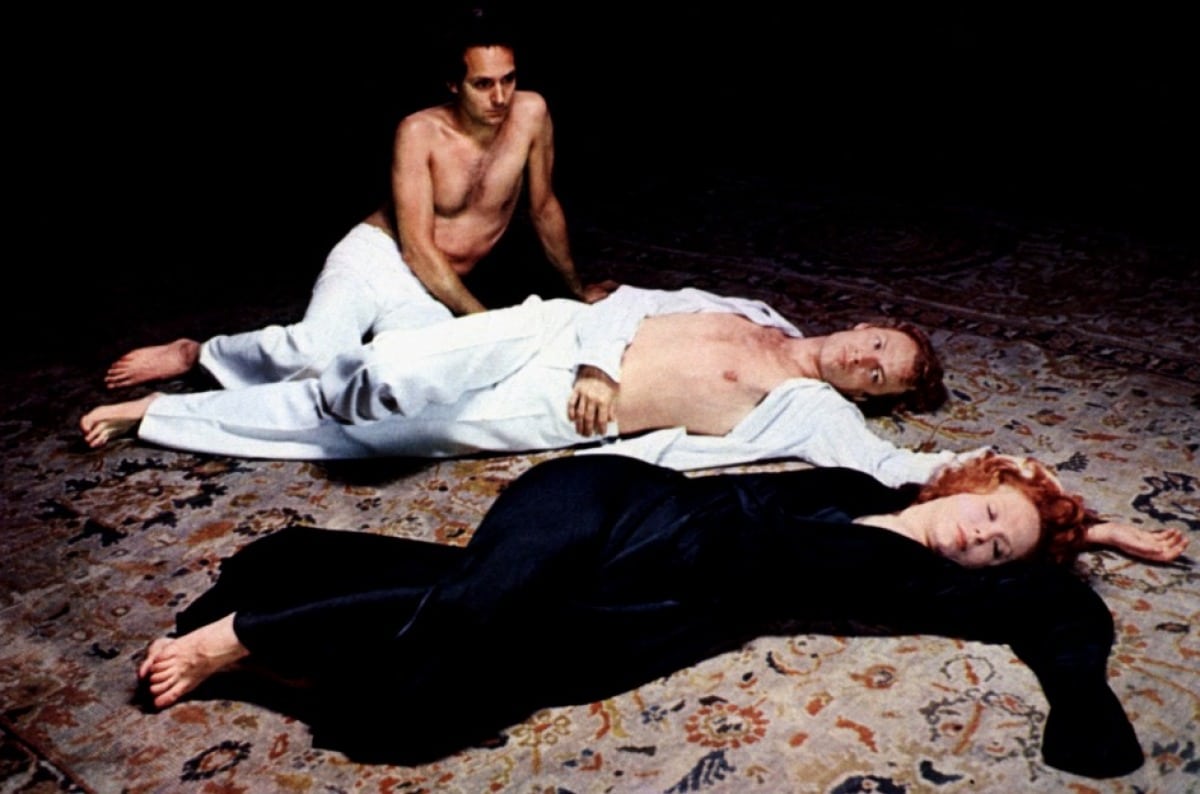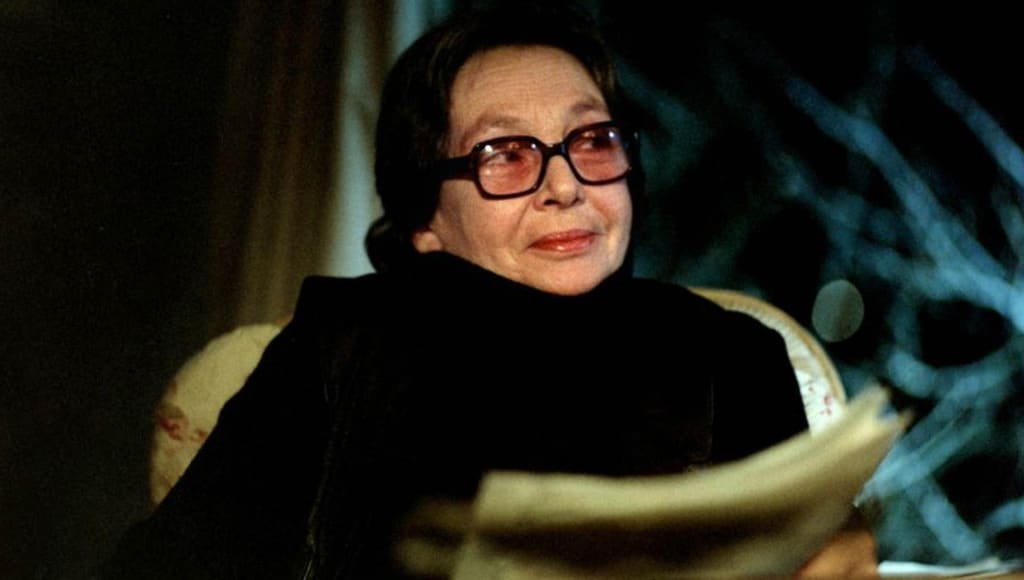
In Marguerite Duras’ novel The Lover (1984), she begins by describing a photograph that doesn’t exist—an image of a young girl on a boat crossing the Mekong river she describes in detail, but she writes:
“The image doesn’t exist. It was omitted. Forgotten. […] It’s to this, this failure to have been created that the image owes its virtue, the virtue of representing, of being the creator of, an absolute.”
The image is defined by its absence. The missing photograph returns throughout the novel like a ghostly motif which gestures towards the infinite potentiality offered by its absence, opening up the imagination to all the possible images that could exist. One of the working titles of The Lover was “La photo absolue”, a phrase characterised by Duras’s practice which is marked by intentional absences and omissions, the push and pull of distance and intimacy. Throughout Duras’ filmmaking, she is less concerned with illustrative cinema and more interested in cinema’s ability to evoke and question. How can you represent a memory? How can you represent the feeling of the fleeting touch of a lover before their departure? How does one represent the unrepresentable?
Although Duras is better known as a writer, having written 50 books throughout her career, her filmmaking was similarly groundbreaking and prolific. Disdainful towards what she called “department store cinema” that is “chewed-over, pre-digested, and served up for the consumption of a public whose intellectual faculties are made to work at 20 percent of their capacity,” Duras’s cinema instead is marked by a resistance to the passive mode of watching commercial cinema which she suspected could easily be used as a conduit for State propaganda when consumed without discernment. Instead, Duras sought to ‘destroy’ cinema, challenging narrative continuity, experimenting with disjunctions between sound and image, and frustrating any attempts at easy identification with her characters. Duras’s cinema demands a different mode of spectatorship—a mode of ‘active’ viewing that could awaken a new political existence. From Danielle Shreir’s elegant translation of Duras’ essays and interviews in My Cinema emerges the image of an artist with a tenacious insistence in her own genius and vision, a self-aggrandiser in the most charming, frustrating and contradictory way: “I believe only in my cinema. I don’t believe in any other cinema.”

Duras’s most well-known film, India Song (1975) emerged from her ongoing obsession with Anne-Marie Stretter, the wife of the ambassador of Vinh Long who she remembered from her childhood in Indochina. She would catch glimpses of Stretter at the French embassy and when she heard the rumour that a young man had killed himself out of love for her, Stretter came to represent the decay of the colonial system and the tragedy of impossible love. Stretter follows Duras through many of her works including her books, The Vice-Consul and The Ravishment of Lol Stein. “Anne-Marie Stretter is my hysteria. And, for that very reason, it is impossible to represent her. I cannot communicate her,” Duras writes, and India Song is marked by the impossibility of representing her past.
With only five main visible characters—most notably Delphine Seyrig as Stretter and Michael Lonsdale as the lonesome Vice Consul, who is driven to madness by his unrequited love for her—India Song is characterised by its weary opulence. Characters languidly drift around the decaying marble Château of the French Embassy in “Calcutta”, dancing sedately. Although the film is set there, Duras cared little about filming geographically in India. Instead, she uses the names of colonial towns, rivers and seas to evoke the past, while filming most of India Song in Château Rothschild on the edge of Paris.
It is Stretter’s absent-presence that marks the early instances of India Song:a photo absolue of Stretter sits atop a grand piano, dimly lit. The camera slowly pans to a mirror spanning the side of the wall where Delphine Seyrig’s reflection appears to us in a dark red gown. Here, we see Stretter for the first time— in both the photograph and the reflection—not as an assured presence but like a haunting, where Duras highlights the instability of the image and its reflection—a wavering absent-presence. Duras notes that “the altar” of the photograph that is seen throughout the film is a constant reminder that Stretter has already been “suspended by death”.
India Song is an obsessive attempt to resurrect the past without ever attempting to ‘represent’ it. As Duras says, “At no moment did I want this story to be ‘relived’ and to bring about a form of identification between the people on the screen, these actors and these other people from Calcutta.” Instead, the actors are not trying to play these characters, they are trying to enact their absence. The actors resemble marmoreal monuments. Their lips are sealed and not a single word is uttered on-screen. Duras wrote, “They are supposed to have spoken, but their words are distant, and this despite the fact that they are alive, or at least not yet consumed by death.”

During filming, Duras would attempt to distract the actors from their performance by replaying the taped dialogue of India Song so that when listening to the clashing of their own words and stage directions, they would become “absent to themselves. They are still partially acting; by virtue of their listening they can’t be themselves completely in the film.”
Duras’s film speaks to the alienation that engulfs the film—how can she represent the seemingly insipid love affair of polite society against the daily perpetuations of colonial violence?
The four lovers drift around the orbit of their desire for Stretter. She is at the centre of the gravitational pull, drifting around the drawing room in her red gown, and any disruption to this carefully choreographed system will pull their whole universe out of equilibrium. With such a strong centrifugal force, destruction can be the only fall-out. No matter how much they try to maintain the sterile removal from the horrors of the colonial order, they are unable to hide. Beyond the walls bursts through the most haunting voice from the film—the Laotian woman’s song and cries. She is a character who is only heard, but never seen throughout the film. She is rumoured to have followed Stretter from the banks of the Mekong River to Calcutta. Her song ricochets through the chateau walls —haunting Stretter and her polite white society.
For her next film, Duras gets rid of actors completely. Is it futile to represent the ghosts of the past through living bodies of the present? Instead, Her Venetian Name in Deserted Calcutta (1976) is composed only of the soundtrack of India Song played against long shots of the crumbling Château Rothschild. In the chateau, the actors have crumbled into its empty space. Duras writes, “The lateral travelling shot across the chateau immediately became the vessel and then the body of Anne-Marie Stretter.” Where Stretter’s body was previously the repository of colonial memory, here, we can only see decay and her absence. Duras was captivated by this building which was formerly owned by the Rothschilds, then occupied by the Nazis, to which the family never returned. Duras writes, “I was haunted by this chateau, completely haunted: it became an obsession.”
As the camera gracefully pans and moves through the interiors and exteriors of the space, we hear the disembodied voices, untethered to a singular form or body. Instead, they populate the decaying building with no past and no future, ghosts of an opulent violence dispersed through empty space. Here, these images are like a Russian doll, holding the faint memory of India Song within them.
As the camera gracefully pans and moves through the interiors and exteriors of the space, we hear the disembodied voices, untethered to a singular form or body. Instead, they populate the decaying building with no past and no future, ghosts of an opulent violence dispersed through empty space. Here, these images are like a Russian doll, holding the faint memory of India Song within them. As a spectator of Her Venetian Name, you’re implicated in an act of remembering and forgetting. Duras seems to ask, do you remember where they danced in India Song, or where Delphine Seyrig stood?
For Duras, no image is enough. Towards the end of her filmmaking career, she made L’Homme Atlantique (1981), a 42-minute essayistic film composed of scattered images of Yann Andréa, her gay young boyfriend and the sea set against a black screen that plunges us in darkness for more than half the runtime. From the depths of the void emerges Duras’s voice, reflecting upon the end of her and Andréa’s relationship.
By withdrawing sight, Duras seems to ask: how can we make a cinema beyond visuality? If an image cannot keep our lover with us, what are we left with?
In the voiceover, Duras says of her lover, “You are absent. With your departure, your absence has come into being, it will be photographed in the same way your presence was.” The absence of the image is a violent return to the void, a loss, but also a reminder that despite absence, memory remains. The black image then becomes a space of communion as Duras insists:
“Because there is no image. The whole theatre belongs to the audience. Blackness—all of it—belongs to them. I experience the film in this way, as if I hadn’t made it. The impression it gives is so violent, the black is so anonymous, so autonomous, a free agent, that, when I see L’Homme atlantique, I am like any other member of the audience.”
With the absence of the image, every single viewing of L’Homme Atlantique is different. What images arise from the sound of the sea against the darkness of the screen in your mind’s eye? L’Homme Atlantique brings the audience into its own realm of image creation—guided by Duras’s voice and her fragmented text recalling the sea, a park, dogs barking. Duras addresses Yann, her lover, as “you” throughout the entire film, but as the screen goes black, the “you” becomes addressed to the “you” that is watching, to the “you” occupying the absent image of the actor, from behind the camera. Bearing witness to the dark screen, we become the film, our gaze on a darkened screen holds the film suspended between life and death.
Slowly, we realise that in L’Homme Atlantique, the loss of the other confronts the spectator of their own absence, looking into a shadowy mirror of oblivion. In Les yeux verts, Duras writes: “You said ‘When we read, we find each other, and when we go to the movies, we lose each other.’ And when we go to watch your films, we do not lose each other. It is in the blackness that we find each other.” In the obscure photo absolue, in the blackhole of spectatorship, we meet each other in a reflective gaze, guided by Duras into an unconscious encounter.
Let Cinema Go To Its Ruin: The Cinema of Marguerite Duras is on at the ICA from ICA between 18th to 25th August 2024.





